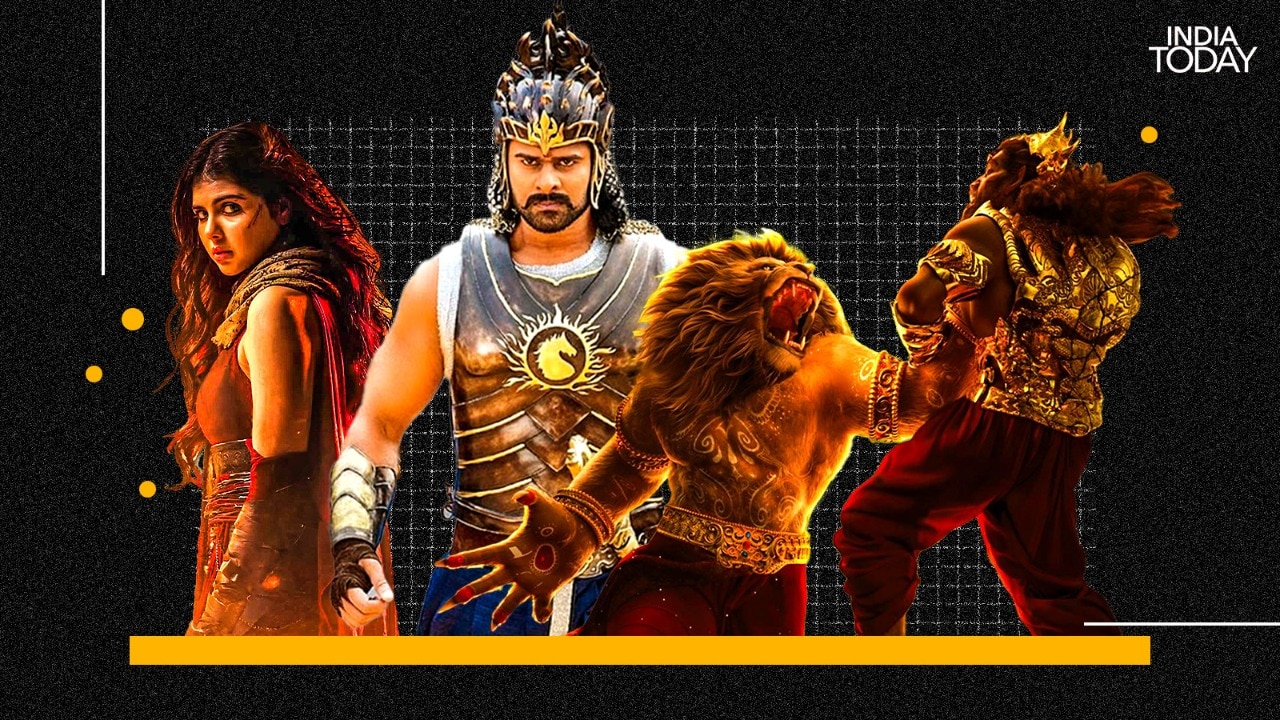Baahubali. Stree. Hanu-Man. Kantara. Mahavatar Narasimha. Lokah: Chapter 1. What do these films have in common?
These films, from different industries, pan-Indian blockbusters in their own right, have used mythology and folklore to build ambitious cinematic universes. Currently, Indian cinema is witnessing a transformative shift as filmmakers increasingly turn to the country's rich tapestry of mythology and folklore to build cinematic universes.
advertisement
From the epic grandeur of 'Baahubali' to the animated spirituality of Mahavatar Cinematic Universe, from Prasanth Varma's superhero reimagining of Indian epics to Maddock Films' folklore-based horror universe and Dominic Arun’s fantasy drama blended with Kerala folklore - these interconnected storytelling ecosystems are redefining Indian cinema space – one universe at a time.
The latest to join this growing roster is Rishab Shetty's 'Kantara'. While the 2022 film introduced audiences to the Bhoota Kola festival of coastal Karnataka, the latest offering, 'Kantara: Chapter 1' (a prequel to the film), delves deeper into Guligas - guardian deities and folk spirits primarily worshipped in the Tulu Nadu region. With such expanding universes on the horizon, let us explore how folklore and mythology, when woven into interconnected storytelling worlds, create this potent formula for success.
THE RISE OF CINEMATIC UNIVERSES IN INDIAN CINEMA
The concept of a cinematic universe is where multiple films, characters, and storylines exist within a shared world. This concept has long been dominated by Western franchises. From Star Wars to Marvel and DC, Indians have been obsessed with such cinematic universes for several decades.
Over the last few years, filmmakers back home seem to ha
Continue Reading on India Today
This preview shows approximately 15% of the article. Read the full story on the publisher's website to support quality journalism.
